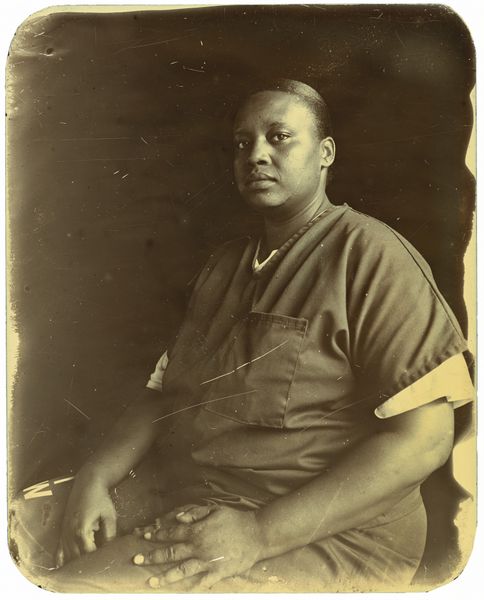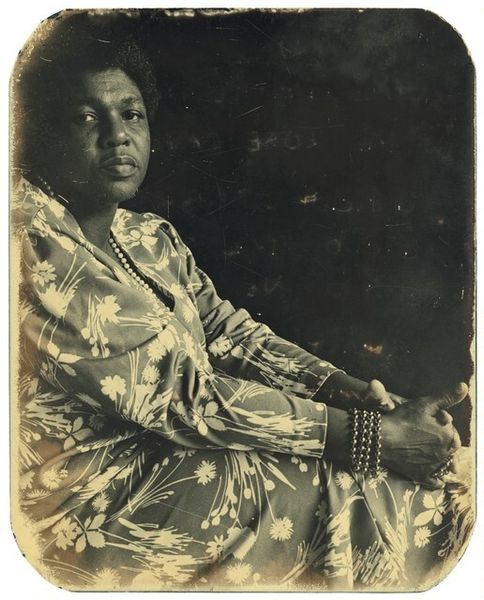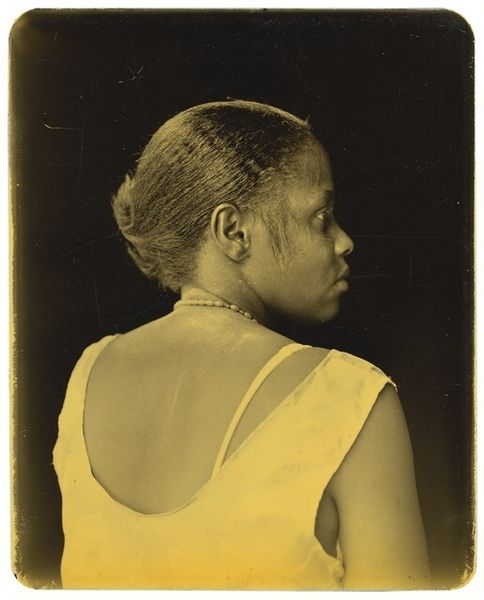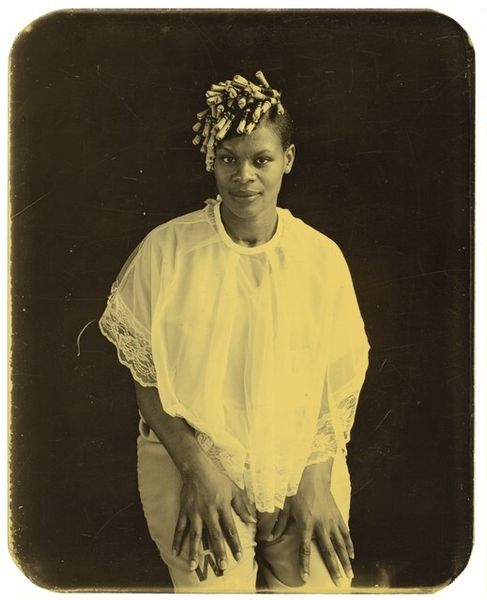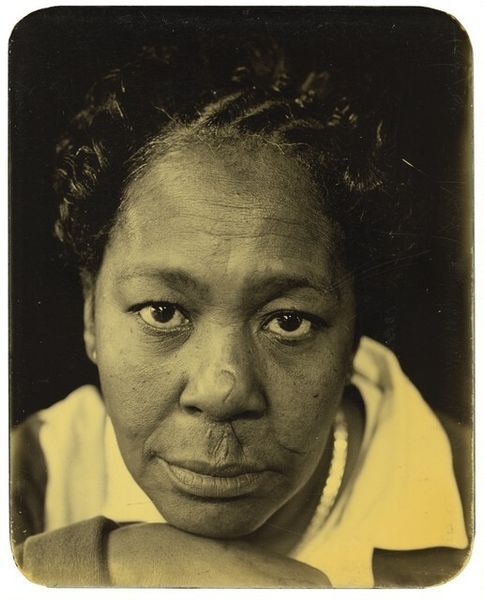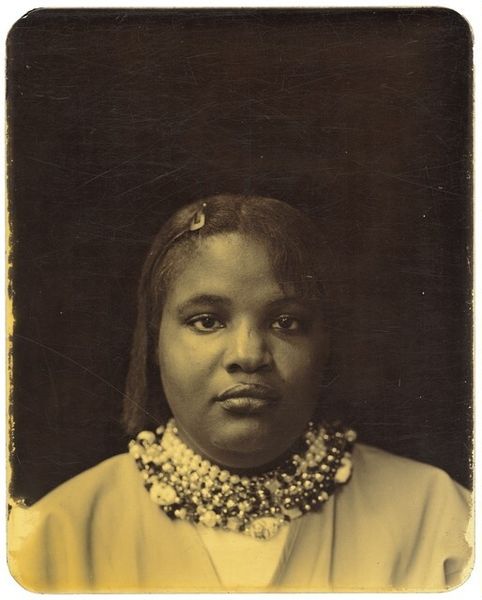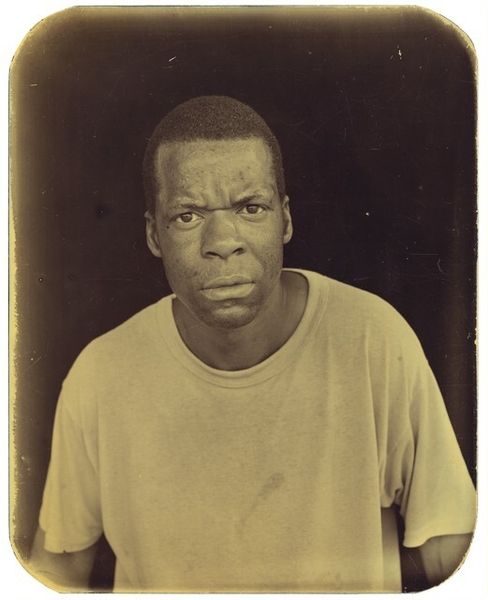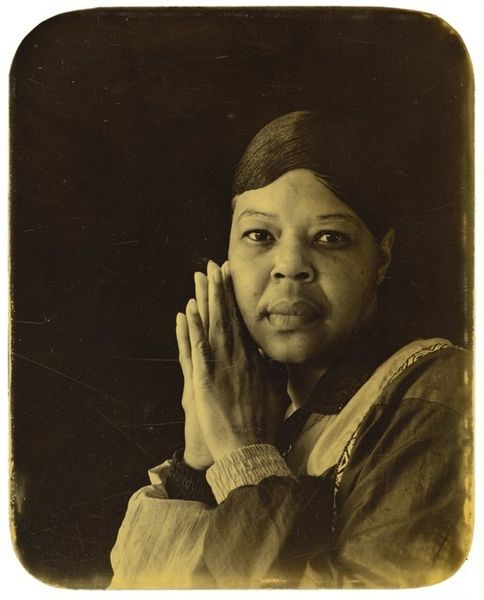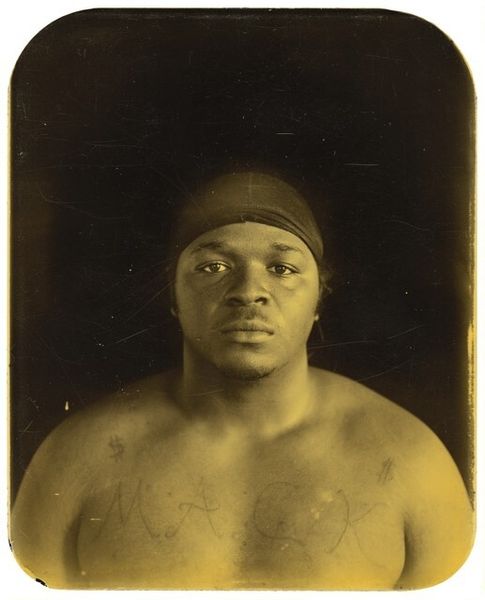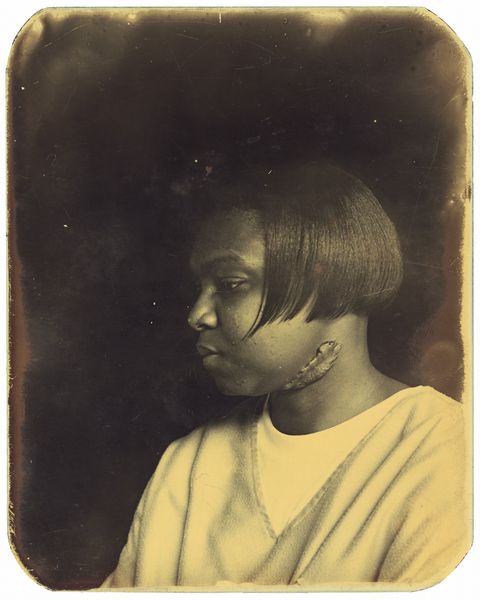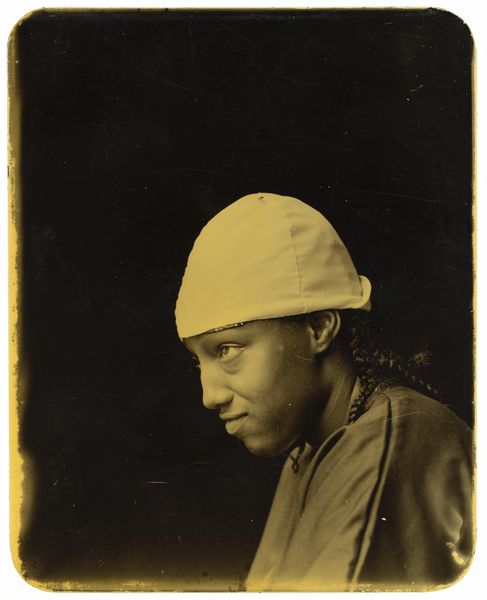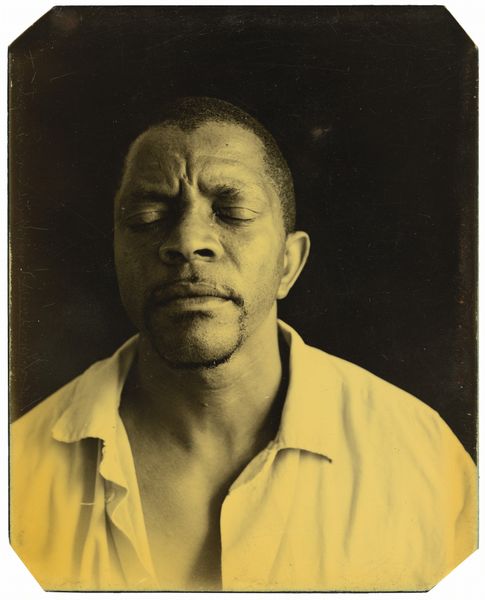
photography, gelatin-silver-print
#
portrait
#
african-art
#
low key portrait
#
portrait image
#
portrait subject
#
photography
#
gelatin-silver-print
#
realism
Dimensions: image/plate: 12.7 × 10.1 cm (5 × 4 in.)
Copyright: National Gallery of Art: CC0 1.0
Curator: The compelling photographic portrait before us is Deborah Luster’s “St. Gabriel, Louisiana,” created between 1998 and 2002 using the gelatin silver print process. Editor: It's striking, isn’t it? The octagonal frame, the dark tonality, the sitter’s gaze... it evokes something akin to 19th-century daguerreotypes, yet it feels utterly modern in its directness. There’s a raw simplicity to the form that I find instantly captivating. Curator: Luster’s work frequently addresses themes of incarceration and justice. This particular portrait is part of a larger series focusing on individuals connected to the Louisiana State Penitentiary, also known as Angola. Editor: Ah, that context profoundly shifts my reading. Knowing that, the sitter's steady gaze takes on new weight, doesn’t it? I notice now how the artist plays with light and shadow—the way the subdued lighting models the subject’s features creating this compelling study of resilience. The visible scratches and imperfections on the print itself contribute to a sense of history, a narrative etched onto the very surface. Curator: The use of the archaic photographic process is crucial here. Luster's deliberate choice links her subjects to the long and fraught history of photography and its relationship to representing marginalized communities. This is about seeing, being seen, and being remembered within the context of a system designed to forget. Editor: Absolutely, and there's an undeniable tension between the delicate nature of the gelatin silver print and the weighty subject matter. The smooth skin of the person represented here stands out among the frame degradation; almost calling us to consider its story with careful intention. Curator: Precisely. The very act of creating a portrait, especially using a process with historical baggage, becomes an act of witnessing and bearing witness to the lives of those often rendered invisible. It becomes a kind of social document. Editor: Looking again, it's remarkable how such a minimalist composition can hold so much complexity and evoke such deep emotions. The subtle asymmetry in the sitter's face, the almost imperceptible tilt of the head—all contribute to this sense of profound presence. Curator: It's a poignant testament to the power of portraiture and its ability to connect us to histories both personal and societal. Editor: Yes, Luster compels us to truly see, to consider the stories behind the faces, and to engage with the complex narratives woven into the very fabric of our society.
Comments
No comments
Be the first to comment and join the conversation on the ultimate creative platform.

